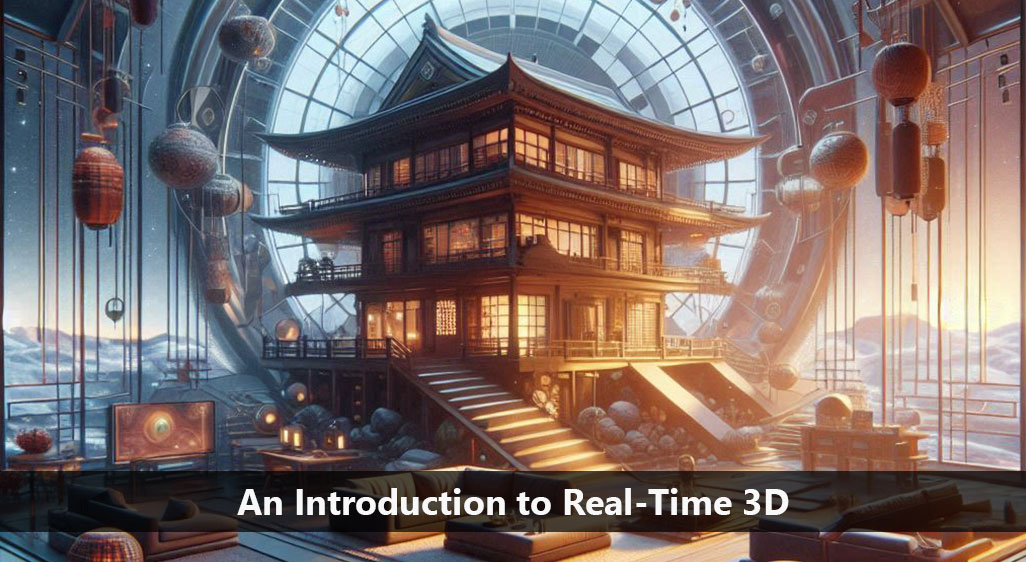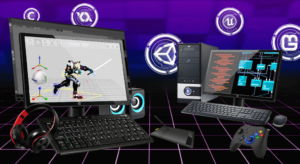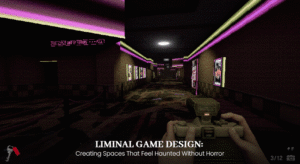
An Introduction to Real-Time 3D
Have you ever wondered how video games and virtual reality experiences feel so lifelike? From the immersive worlds of gaming to the realistic simulations used in training programs, 3D graphics are everywhere. But what makes these graphics come to life in real time, responding instantly to your actions and commands?
Real-time 3D is a cutting-edge technology that allows 3D graphics to be generated instantaneously, enabling seamless interactions in digital environments. Unlike traditional 3D graphics that take time to render, real-time 3D provides immediate feedback, creating a dynamic and interactive experience. Let’s explore more together, in this article about the world of real-time 3D.
What is Real-Time 3D?
Real-time 3D is a technology that allows three-dimensional graphics to be rendered instantly, providing immediate visual feedback to user inputs. Unlike pre-rendered 3D graphics, real-time 3D processes and displays images on the fly, creating a smooth and interactive experience for the user. Key characteristics of 3D graphics include instant rendering at high speeds, user interactivity, and dynamic environments that change in response to user actions. Common applications of real-time 3D include video games, where players interact with detailed worlds; virtual reality (VR), offering immersive experiences; and simulations, such as flight simulators and medical training tools, providing realistic scenarios for learning and practice. Real-time 3D technology is responsible for transforming various fields by delivering engaging, interactive experiences that enhance entertainment, education, and professional training.
Learn About the Evolution of 3D Graphics
The evolution of 3D graphics began in the 1960s with basic wireframe models used for simple visualizations. Significant advancements occurred in the 1980s with raster graphics and shading techniques, and the introduction of GPUs in the 1990s revolutionized real-time rendering. Programmable shaders in the early 2000s further enhanced detail and realism. Today, real-time 3D technology, powered by modern GPUs and advanced rendering techniques, is a game-changer across various industries. Video games offer immersive worlds, VR provides engaging environments, and simulations deliver realistic training experiences. With innovations like ray tracing and AI-driven enhancements, real-time 3D graphics continue to push boundaries, promising even more exciting developments soon.
How Does Real-Time 3D Work?
Real-time 3D graphics dynamically generate 3D images quickly for interactive experiences. It begins with 3D modelling, where digital representations of objects are created using specialised software. The rendering process then converts these models into 2D images through stages like vertex processing, geometry processing, and pixel processing, with GPUs handling complex calculations for smooth visuals. To maintain performance and realism, developers use optimization techniques such as Level of Detail (LOD), which adjusts model complexity based on distance, culling, and removing objects outside the camera’s view. These methods ensure that real-time 3D graphics run efficiently, delivering immersive and high-quality visual experiences.
Applications of Real-Time 3D
Real-time 3D graphics are revolutionising industries with interactive and dynamic capabilities. In entertainment, they enhance video games with stunning visuals and seamless gameplay, bring movies to life with captivating special effects, and power immersive VR experiences. Beyond entertainment, real-time 3D is important in industrial applications, providing realistic simulations for training programs and detailed, interactive architectural visualizations. Emerging trends further expand its potential, with augmented reality (AR) integrating digital elements into the real world and real-time collaboration tools enabling teams to work together in virtual spaces. These applications highlight the transformative power of real-time 3D technology across various fields, making it an essential tool for innovation and engagement.
The Future of Real-Time 3D
Looking ahead, the future of real-time 3D technology holds exciting possibilities, driven by ongoing advancements. Technologically, we anticipate faster GPUs enabling more complex and realistic graphics, while AI and machine learning could enhance rendering efficiency and realism. These developments are poised to revolutionize industries across the board. In entertainment, expect even more immersive gaming experiences and interactive storytelling in movies. Industries like healthcare and education could see enhanced training simulations and virtual learning environments. However, these advancements come with challenges. Ensuring compatibility across diverse hardware platforms and optimizing real-time performance without sacrificing quality remain critical. Additionally, addressing ethical concerns around data privacy in virtual environments and managing the environmental impact of increased computational demands are pressing issues. Despite these challenges, the future of real-time 3D promises to reshape how we interact with digital content and collaborate across fields, paving the way for a more dynamic and interconnected future.
Real-time 3D technology stands as a cornerstone of modern innovation, poised to redefine how we perceive and interact with digital content across various sectors. Its ability to render complex, interactive environments in milliseconds has transformed entertainment, education, healthcare, and beyond. As we look forward, the potential of real-time 3D to drive further advancements and efficiencies is immense. Embracing this technology will not just enhance your user experiences but will also unlock new opportunities for creativity and problem-solving. We encourage our readers today, to explore the world of real-time 3D. Whether you’re curious about its applications in gaming, simulations, or design, exploring this field can open doors to exciting career paths and creative pursuits. Consider our courses and resources at Arena Animations, Park Street, where you can gain hands-on experience and valuable skills in real-time 3D. Stay curious, stay innovative, and discover the limitless possibilities of real-time 3D technology.












